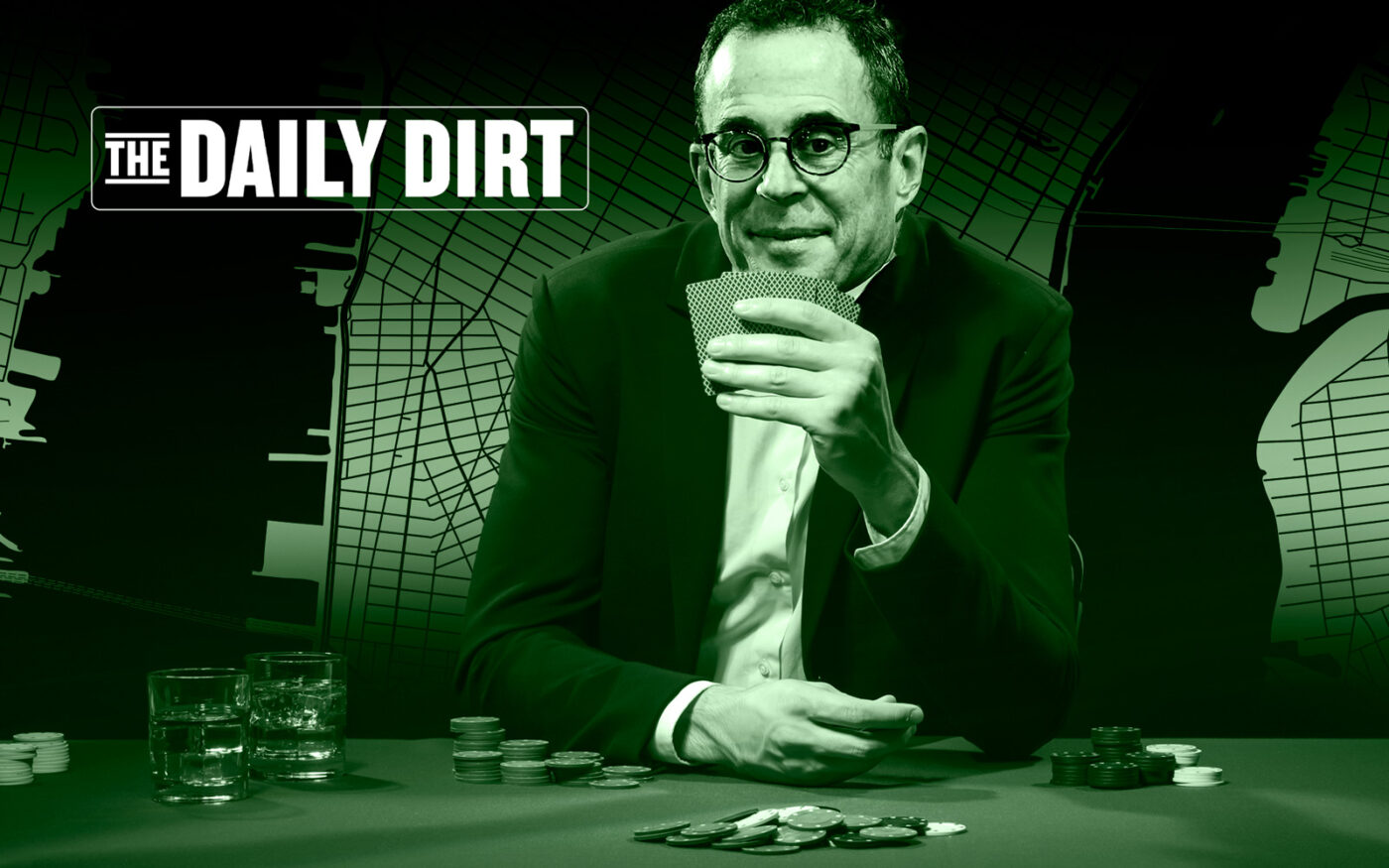Related Companies has finally put forth its grand plan for a casino above the undeveloped Western Rail Yards at Hudson Yards. Well, the scoping documents, at least. The fancy renderings and full rollout are yet to come.
The development would include three skyscrapers, each of them about 1,200 feet or taller. The gaming and resort building would span 2.7 million square feet and have a 1,750-room hotel, conference facilities, retail outlets and restaurants.
The $12 billion project is among the most ambitious contestants for one of the state’s three downstate casino licenses. But, it could face an unexpected hurdle, thanks to a few details.
The development would require changes to the 2009 rezoning that cleared the way for Hudson Yards, likely eliciting resistance from community members who remember the protracted battle that led to the original agreement.
That rezoning was based on plans to build six buildings above the Western Rail Yards. The latest outline would cut that number to three, but each would be taller and denser than the towers originally proposed.
It’s unclear how much of a barrier the rezoning would be. But Related can take solace in the fact that it isn’t the only developer facing challenges beyond the state’s approval process.
Two others would need special approval to build their projects on public parkland.
Gambling group Bally’s would build a casino on a city-owned golf course in the Bronx. Bally’s took over operations of the course from Donald Trump last year and stripped the former president’s name from it.
Then, there’s Mets owner Steve Cohen’s proposal, which would turn 50 acres of parking lots into a casino site. For some odd reason, that parking lot is technically parkland.
In both cases, city and state officials would need to approve any new use of the land. So-called alienation of parkland requires state legislation and, by Albany custom, sign-off by the local Assembly and Senate representatives. Cohen’s hurdle is Sen. Jessica Ramos, who has been cool to the plan but says she will decide by the end of the legislative session, June 6.
On Long Island, Las Vegas Sands and RXR reached an agreement for a 99-year lease of Nassau Coliseum last year. But the duo hit a bump recently when a state judge voided the agreement. Nassau County’s Planning Commission allegedly failed to properly notify the public of a meeting to discuss the lease, a violation of the state’s Open Meetings Law.
That mistake reset the timeline for the project and potentially opened the door for local opposition to get in the way of the lease. However, Nassau elected officials have been nearly unanimous in their support of the casino plan — a stark contrast to local politicians’ response to gambling in New York City.
The biggest challenge for most casino proposals is local opinion. Plenty of powerful local groups have voiced opposition to casino projects in their neighborhoods, though they are sometimes matched by similarly passionate supporters.
The process requires community support for a proposal to reach state regulators. Each locality will form a community advisory committee before voting on an application.
From there, the next step is for the State Gaming Commission to respond to questions from bidders, after which the application window will formally open.
—
What we’re thinking about: Silverstein’s proposal for a casino on Manhattan’s West Side. The project generated some controversy thanks to a revelation that Janno Lieber, the head of the MTA (a state agency), owns a 3 percent stake in the land Silverstein would build on. That has raised questions about conflict of interest, though Lieber has recused himself from any involvement in the casino bid. Could the hubbub affect Silverstein’s bid? Send a note to david.westenhaver@therealdeal.com.
—
Closing Time
Residential: The priciest residential closing on Friday was $4.5 million for a sponsor sale condominium unit at 215 West 28th (Maverick) Unit 15C in Chelsea.
Commercial: The most expensive commercial closing of the day was $4.58 million for a 14,900 square foot warehouse in East Williamsburg.
New to the Market
The priciest residential property to hit the market on Friday was a townhome for $12.8 million at 8 East 67th in Lenox Hill. Douglas Elliman has the listing.
— Matt Elo
—
A thing we’ve learned: There’s an abandoned subway station beneath City Hall. It was opened in 1904 with the original (private) subway system. But a design flaw rendered it useless by 1945, when the city introduced longer trains to address increased ridership. The station had a curved platform that could only accommodate the shorter trains used in the earliest days of the transit system.
Elsewhere in New York
— The company that operates NYC Ferry (but not the Staten Island Ferry) declared bankruptcy this week, WSJ reported. San Francisco-based Hornblower Group will be taken over by one of its creditors, private equity firm Strategic Value Partners. The cruise operator has $1.2 billion of debt, almost double its debt load from 2019.
— The city’s most famous parks are typically the ones with the most funding, too. That’s because many of those parks have nonprofit fundraising arms, like the Central Park Conservancy, which regularly brings in $140 million or more each year, according to Gothamist. Because the city’s lesser-known parks don’t get quite as much love, lawmakers are pushing for increased funding to take care of them.
